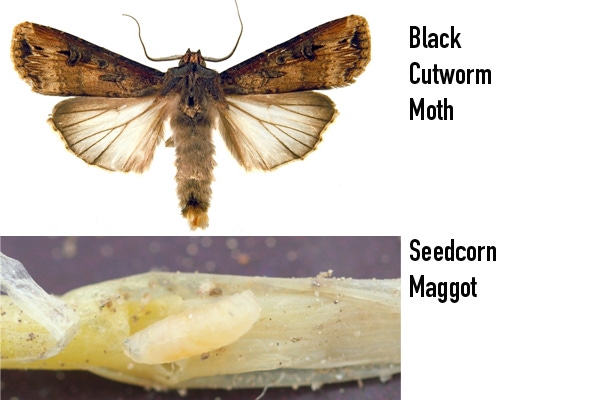May 9, 2014

During corn planting and as seedlings start to emerge, corn growers should be on the lookout for the black cutworm moth, says And Michel, Ohio State University Extension pest expert. The migrating moth could cause stand loss. The pest tends to prefer to infest fields with significant ground cover and weed presence, says Michel.
"It's hard to predict where an infestation may occur (because) black cutworm is a migratory moth and wherever they land, they land," he says. "With black cutworm, growers can find significant injury especially after planting, right when the corn is starting to emerge. If you do have an infestation, you could have some significant stand loss, with areas that may need replanting or rescue treatments."
The concern for this pest is that the migrating moth lays eggs in cornfields, which can cause severe cutting of the plant, Michel says. The resulting stand loss in corn is generally associated with below- or at-ground level feeding injury, which occurs below the growing point, he says.
Growers who find black cutworm infestations may find that while preventative treatment, including insecticidal seed treatment, is not as effective, rescue treatments are, Michel says.
"But the best management tool for growers is to scout for cutting after corn emergence," he says.
More information on black cutworm can be found in an OSU Extension fact sheet.
Another pest growers can look out for is the seedcorn maggot, which can impact both corn and soybeans, Michel says. This pest also tends to be found in fields with heavy organic matter or recently tilled-under alfalfa, hay or wheat fields.
Growers who find seedcorn maggots can control the pests with insecticidal seed treatments or commercially applied insecticide seed treatments, he says.
Growers who find seedcorn maggots in their fields can delay planting by three to four weeks in a field that has green cover tilled under, Michel says. That should be ample time for seedcorn maggots to have finished their larval stage, which would limit damage.
Read the story from Purdue University.
 You might also like:
You might also like:
You May Also Like




